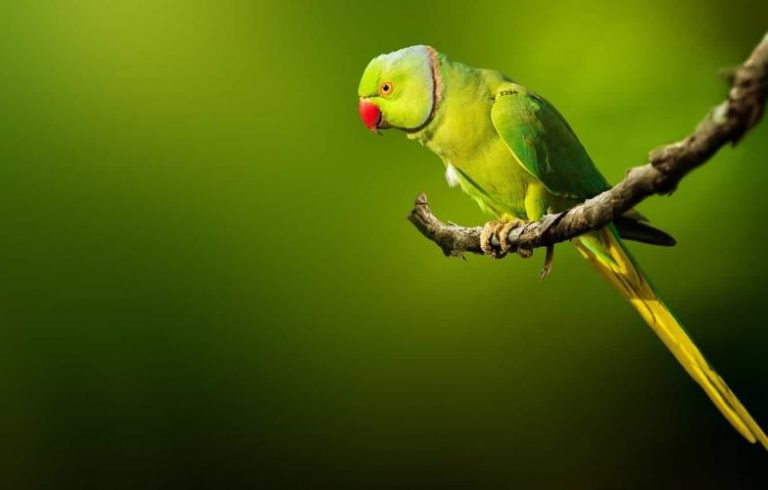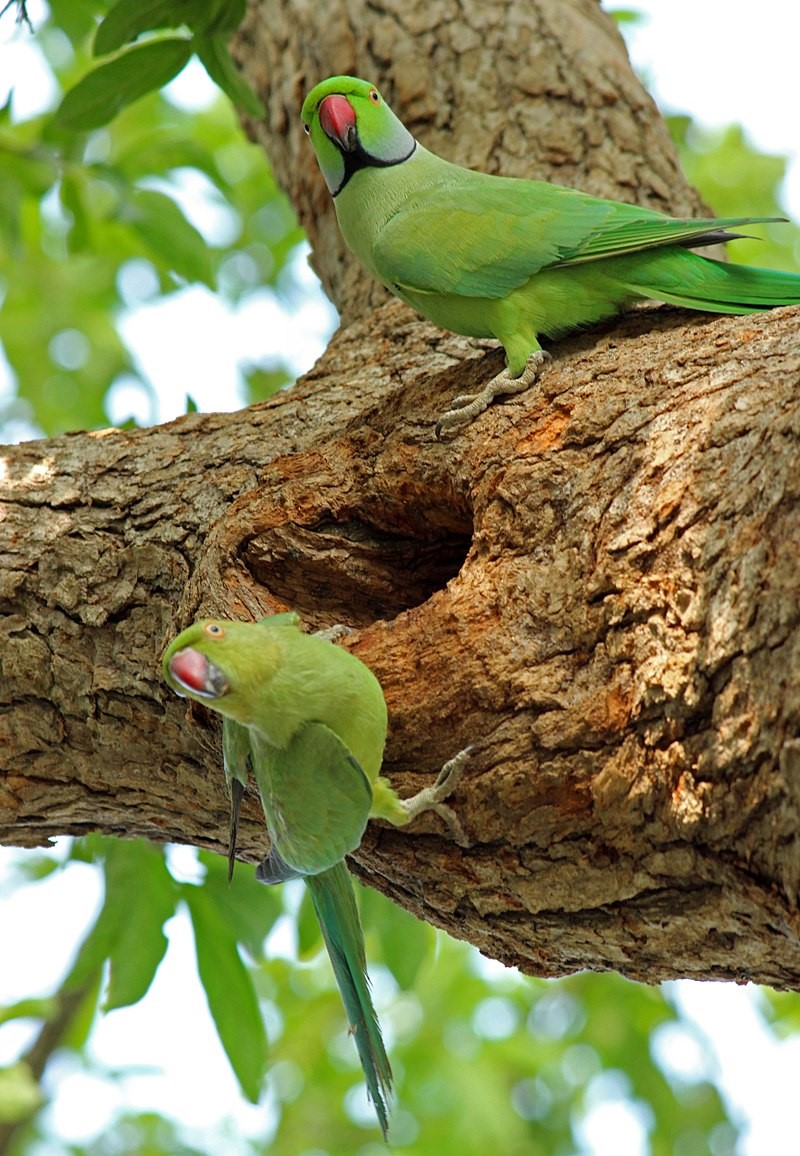
Authorities must impose a ban on the illegal marketing of the parrots so that the parrot population may increase
Prof Dr. Abdullah G Arijo
Some time back, Pakistan was known as a hunter’s paradise, teeming with a diverse range of animal species. However, over the years, these species have faced numerous threats, leading to a gradual decline and even extinction. This situation is indeed a cause for concern.
Pakistan’s incredible biodiversity includes endemic wildlife species, but unfortunately, many of them are now in crisis. The numbers of these species have drastically fallen, and some are on the brink of extinction. Let’s explore some of the key threats to wildlife in Pakistan including habitat destruction. Vast areas of natural habitat are lost due to agriculture, urban sprawl, mining, and infrastructure development. Pollution, invasive species, and climate change further exacerbate the problem.
With the start of mango season, a score of hunters travels from Karachi to the interior of Sindh particularly Mirpur Khas to steal the parrot eggs, which are hatched artificially and the young ones coming out of these eggs are sold in local markets of Karachi and exported abroad too.
This over-hunting, over-fishing, and unsustainable harvesting of wildlife put immense pressure on species. Some animals are driven toward extinction to support the international wildlife trade. As human populations expand, conflicts arise between humans and wildlife. Animals may be killed when they come into direct conflict with humans or livestock.
In recent years climatic change events, such as floods, droughts, and wildfires, have damaged wildlife habitats and posed a serious threat to wild species.
In recent years climatic change events, such as floods, droughts, and wildfires, have damaged wildlife habitats and posed a serious threat to wild species. Despite efforts to combat it, the illegal wildlife trade persists. Organizations like WWF are working to increase awareness, strengthen regulations, and enforce wildlife protection. Moreover, the indiscriminate use of veterinary medicines has posed a serious threat resulting in valuable species extinction. After vultures, the parrot could be the next extinction in Pakistan.
The International Union for Conservation of Nature’s Red List of Threatened Species (IUCN) estimates that 26,500 species are threatened by the extinction of an assessment of 96,900 species around the world. The species analysis includes both animals and plants. Species are sorted into one of nine categories, not evaluated, data deficient, least concern, near threatened, vulnerable, endangered, critically endangered, extinct in the wild, and extinct.
 Species from the vulnerable to extinct categories are considered threatened by extinction. Some endangered species include the Hawksbill sea turtle, the Eastern gorilla, several rhinoceros species, Capuchin monkeys, and the red panda. Forty percent of endangered species are amphibians, 25 percent are mammals and 14 percent are birds. Trade, poaching, and habitat destruction are some of the leading causes of animal population reduction and endangerment. The Convention on International Trade in Endangered Species of Wild Fauna and Flora formed an international agreement to prohibit the trade of rare plant and animal species to eliminate trade as a contributor to endangerment and extinction.
Species from the vulnerable to extinct categories are considered threatened by extinction. Some endangered species include the Hawksbill sea turtle, the Eastern gorilla, several rhinoceros species, Capuchin monkeys, and the red panda. Forty percent of endangered species are amphibians, 25 percent are mammals and 14 percent are birds. Trade, poaching, and habitat destruction are some of the leading causes of animal population reduction and endangerment. The Convention on International Trade in Endangered Species of Wild Fauna and Flora formed an international agreement to prohibit the trade of rare plant and animal species to eliminate trade as a contributor to endangerment and extinction.
Pakistan’s largest city, Karachi, is now a bustling metropolis complete with skyscrapers, shopping centers, shanty towns, and heavy traffic. Although it is hard to believe, the metropolis home to over 200 million people boasted rich wildlife up until a few decades ago. Once a natural habitat for colorful birds, Chinkara deer, and predators like leopards, the city has lost its precious wildlife not only through the ravages of time, but also because of human influence, mainly unplanned urbanization, and indiscriminate killing.
According to the experts, the alteration of habitat, a direct result of unplanned urbanization and pollution, has badly hit the population of urban birds like house sparrows and parrots in the past two decades. Instead of these human-friendly birds, which signify the quality of air, other bird species such as kites, crows, and mynas occupy the skies of today’s Karachi. r the younger generation, it is hard to believe that Karachi once had strong wildlife. The city’s western, eastern, and northern outskirts had served as a habitat for several rare birds and animals, including leopards and deer until the 1960s, but due to overhunting scenario has changed.
The colossal rise in population, flanked by inadvertent urbanization, gradually destroyed the natural habitat, eventually leading to the extinction of several birds, reptiles, and animals like leopards, deer, hedgehogs, snakes, and others in this part of the country.
The situation in other big cities like Lahore, Faisalabad, Peshawar, and Quetta is relatively better as they still have “marginal areas” to protect their wildlife to a certain extent.
It is difficult to say this is satisfactory but relatively better compared to Karachi because they still have a village life as well.
Pigeon populations are booming due to people feeding them at “Kabootar Chowk” sites. While this may seem nice, it can lead to allergies if the droppings aren’t cleaned up properly.
Experts see a rapid drop in nestling places by human influence, poor diet, and rising air pollution as key reasons behind the disappearance of these birds.
According to the latest surveys, report that the population of parrots and sparrows has dwindled by 80% and 70 % respectively in Karachi for the past two decades.
Cutting off trees and grasslands for wood, and construction purposes, on the one hand, has deprived these birds of their nestling places, and proper diet whereas, the increasing pollution and garbage sites, on the other, have led to an increase in the population of “opportunistic” birds like kites, crows, and mynas. Also, huge plantations of “outlandish” trees like conocarpus, mesquite, and eucalyptus, which otherwise have no disadvantage except that they do not provide a nestling place for sparrows and parrots.
The sparrow population in Karachi has been significantly impacted by various factors such as habitat loss, limited food supply, and predators like kites. Similarly, the depletion of nesting sites has also compelled several seabird species to abandon the city’s beaches. Furthermore, the eastern outskirts of Karachi have witnessed the disappearance of parrots primarily due to the dismantling of fruit gardens.
Pigeon populations are booming due to people feeding them at “Kabootar Chowk” sites. While this may seem nice, it can lead to allergies if the droppings aren’t cleaned up properly.
Authorities must impose a ban on the illegal marketing of the parrots so that the parrot population may increase or fate is known otherwise.
___________________
 Prof. (R) Dr. Abdullah G. Arijo is Advisor and Visiting Professor, SBBUVAS, Sakrand, Pakistan. He is Ex-Chairman, Department of Parasitology, Sindh Agriculture University and Ex-Advisor Academics & P&D to Vice Chancellor SAU Tandojam
Prof. (R) Dr. Abdullah G. Arijo is Advisor and Visiting Professor, SBBUVAS, Sakrand, Pakistan. He is Ex-Chairman, Department of Parasitology, Sindh Agriculture University and Ex-Advisor Academics & P&D to Vice Chancellor SAU Tandojam
[…] READ: THE PARROT PROBLEM […]